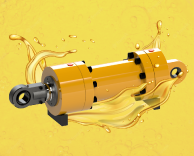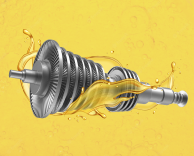Oil Analysis in Field Inspections: Techniques, Methods, and Best Practices
Introduction:
Oil analysis is a vital part of field inspections, helping industries detect potential failures,
contamination, and degradation in lubricants. Regularly performing oil analysis allows operators
to maintain equipment, extend its lifespan, and avoid unexpected downtime. By identifying
contaminants, moisture, and signs of wear early on, technicians can make informed decisions
about oil changes, system maintenance, and machinery repairs.
This article will explore essential techniques for performing oil analysis during field
inspections, covering visual, tactile, and auditory inspection methods. With these approaches,
maintenance teams can quickly assess the health of their lubrication systems and make timely
interventions to avoid costly failures.
Why Oil Analysis is Crucial for Equipment Maintenance
The quality of oil in any machinery is paramount to its performance and longevity. Over time, oil degrades due to oxidation, contamination, and thermal breakdown. Regular oil analysis provides several benefits, including:
- Early Detection of Failures: Detecting contaminants such as water, dirt, and additives can prevent more severe damage to equipment.
- Prevention of Unplanned Downtime: Routine oil analysis allows for maintenance to be scheduled proactively, reducing unplanned maintenance costs.
- Improved Equipment Performance: Clean, high-quality oil ensures machinery operates at peak efficiency, improving productivity and reducing wear.
- Cost Savings: By extending the life of machinery and optimizing oil changes, companies can save on repair costs and oil replacements.
To ensure accurate results, industries can leverage Minimac advanced Oil Condition Monitoring Equipment designed to provide real-time data on oil quality, contamination, and wear.
Visual Inspection of Oil: Identifying Key Indicators
Visual inspection is one of the most accessible and effective ways to assess oil condition in the field. Key indicators to look for during visual inspection include:
1.Color Assessment
Oil color is one of the first signs of degradation. A significant change in the oil's color can indicate issues such as:
- Oxidation: When oil reacts with air, it darkens over time. This can lead to the formation of sludge and acids, damaging equipment.
- Thermal Degradation: High temperatures cause oil to darken, indicating that it has been subjected to extreme heat, which accelerates degradation.
- Contamination: A milky or cloudy color suggests water contamination, which can lead to emulsions that affect the performance of the lubricant.
Comparing the oil sample to a new, fresh sample will provide a benchmark for assessing its condition.
2.Detecting Emulsions and Cloudiness
Cloudiness or emulsions in the oil sample often point to the presence of unwanted contaminants. These can include:
- Additives Breaking Down: Oil additives that break down can cause cloudiness, impacting the oil’s performance.
- Air, Salt, or Glycol Contamination: These contaminants may cause the oil to emulsify, affecting lubrication efficiency.
- Stable vs. Unstable Emulsions: Stable emulsions can be harmless, while unstable ones may lead to issues like foaming or improper lubrication.
3.Free Water and Sediment Detection
Free water is one of the most detrimental contaminants in oil. Water can separate from the oil
and settle at the bottom of the container, often causing rust and corrosion in machinery
components.
Signs of free water include:
- Separation Rate: How quickly the water separates from the oil. Faster separation may indicate a higher concentration of water.
- Sediment Colour and Density: The appearance and density of the sediment can help identify the nature of the contamination. For example, black or amber sediment may indicate the presence of degraded oil or carbon.
- Laser Through the Bottle: Using a laser pointer can help visually identify the separation of water from oil, providing a clear indicator of contamination.
4.Using Oil Colour for Diagnosis: A Deeper Dive
Oil color is more than just an aesthetic observation—it serves as an important diagnostic tool. There are various ways to enhance the accuracy of color-based oil analysis, including:
1)Using Oil Colour Gauges: Colour gauges help field technicians visually compare the oil sample with predefined color charts, which makes detecting degradation and contamination easier.
2)Glass or PET Plastic Bottles: These materials are ideal for holding oil samples as they don’t interact with the oil and provide a clear view for comparison.
3)Comparing to New Oil: One of the simplest yet effective ways to assess oil color is by comparing the sample to a new oil sample of the same type. Significant color differences could indicate that the oil has undergone degradation or contamination.
5.Routine Inspection of Sight Glasses in Oil Analysis:
Moisture is a common contaminant that can significantly impair oil performance. Visual inspection is an effective way to detect moisture, especially when using transparent containers. Key steps include:
- Hazy or Milky Appearance: A hazy, cloudy, or milky appearance often indicates water emulsification, which occurs when water is suspended in the oil.
- Using Comparators: For more precise moisture detection, using comparators, such as clear bottles containing new or untreated oil, can provide a reference point.
- Laser Pointer: A laser pointer can help enhance the visibility of the water phase in the oil, providing an additional layer of analysis.
6. Routine Sight Glass Inspections and What to Look For
Sight glasses are valuable for inspecting the oil in machinery during operation. Regular checks can provide real-time insights into the oil's condition.
- Oil Level: Sudden increases or decreases in oil levels can signal potential leaks or system malfunctions.
- Foaming: Foaming oil is a sign of air or water contamination and can lead to pump cavitation and poor lubrication.
- Oil Colour and Turbidity: Dark or cloudy oil suggests oxidation, contamination, or degradation.
- Use of Blue Pen-Lights: Blue pen-lights can be used to detect changes in the oil level and assess oil clarity, providing enhanced visibility.
7. Auditory and Tactile Inspection Methods
In addition to visual inspection, auditory and tactile inspections provide important diagnostic insights.
- Audible Clues for Gear and Hydraulic Systems: Sounds produced by machinery can help diagnose potential issues with the oil. For instance:
- Gearing: A smooth "singing" sound is typically a sign of healthy gears. In contrast, grinding or squealing can suggest problems such as poor lubrication or contamination.
-
Hydraulic Systems:
Metallic sounds from pumps often indicate that water is present in the oil, while high-pitched noises could suggest cavitation.
8. Tactile Clues for Grease and Sludge
Touching the oil or grease can provide clues about its condition:
- Grease Consistency: Grease should feel slippery and smooth. If it feels stringy, lumpy, or sticky, it may be contaminated or degraded.
- Sludge and Debris: Sludge, dirt, or pasty, sticky textures in oil are indicative of severe contamination, requiring immediate action.
9. Using Odour as a Diagnostic Tool
Odor analysis can be a quick and effective way to detect oil degradation or contamination:
- Burnt Oil Smell: A burnt smell indicates the oil has been exposed to excessive heat, causing it to oxidize.
- Diesel Odour: A diesel-like odor often signals fuel contamination in the oil.
- Comparators for Odour: Using bottles of new, oxidized, or diesel-contaminated oil as comparators allows for quick identification of the type of contamination.
Common Challenges in Field Oil Inspections
While oil analysis is a highly effective tool, there are some challenges that can hinder its accuracy:
- Accessing Hard-to-Reach Areas: Certain equipment components may be difficult to reach, making it challenging to obtain accurate oil samples.
- Data Overload: Analyzing large volumes of data requires sophisticated tools and systems for tracking trends and identifying patterns.
- Consistency in Inspections: Inconsistent inspection procedures can lead to unreliable results. Establishing standardized inspection protocols is essential for accurate results.
Best Practices for Effective Oil Inspections
To ensure accurate and efficient oil analysis during field inspections, follow these best practices:
1.Train Technicians Regularly: Ongoing training ensures that technicians are familiar with the latest oil analysis techniques.
2.Use Technology: Incorporating digital tools, such as sensors, laser pointers, and data analytics software, can enhance the efficiency of field inspections.
3.Document Findings: Keep thorough records of each inspection for future reference and trend analysis.
4.Perform Regular Inspections: Conduct oil inspections regularly to monitor changes in oil condition over time.
5.Follow Standardized Protocols: Adopting consistent procedures ensures reliable and comparable results.
Conclusion
Oil analysis is an indispensable tool in maintaining the health and efficiency of industrial
equipment. By incorporating regular visual, tactile, and auditory inspections into field
maintenance practices, technicians can quickly identify signs of oil degradation, contamination,
and wear. These insights enable timely interventions, reducing unplanned downtime, improving
equipment performance, and extending the lifespan of machinery.
While challenges like data overload and hard-to-reach components may arise, following best
practices such as technician training, using advanced tools, and maintaining standardized
inspection protocols ensures accurate and reliable results. By prioritizing oil analysis as part
of a proactive maintenance strategy, industries can optimize operations, enhance productivity,
and achieve significant cost savings in the long run.





